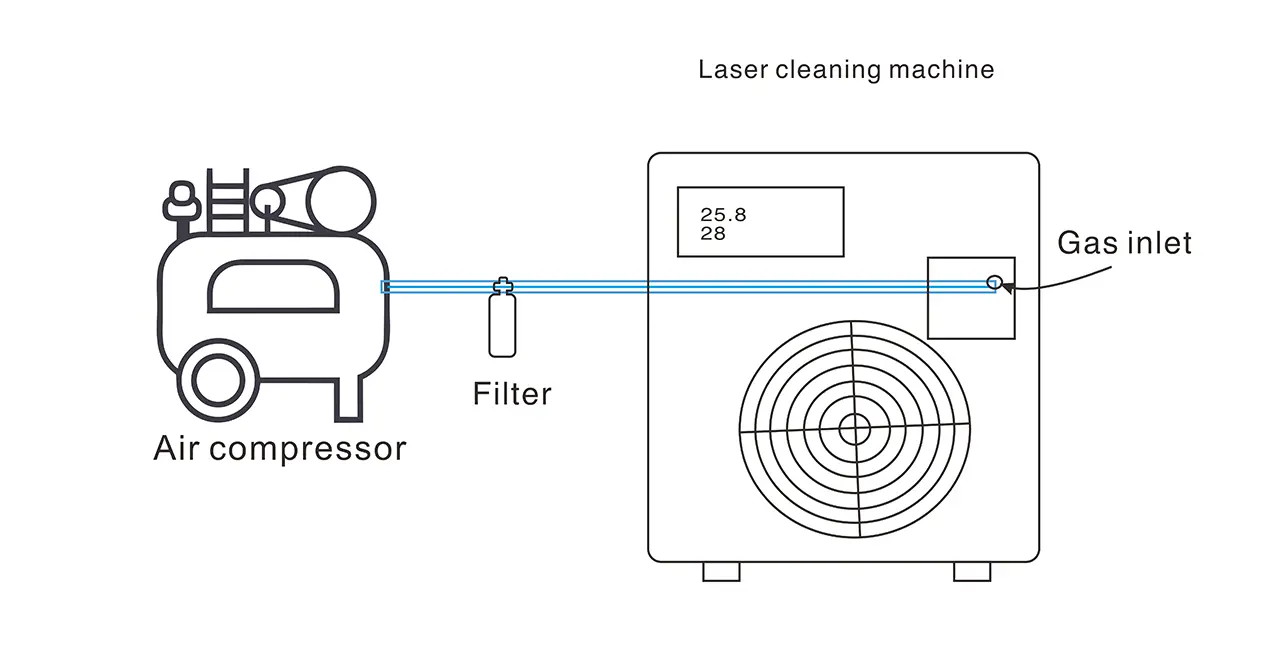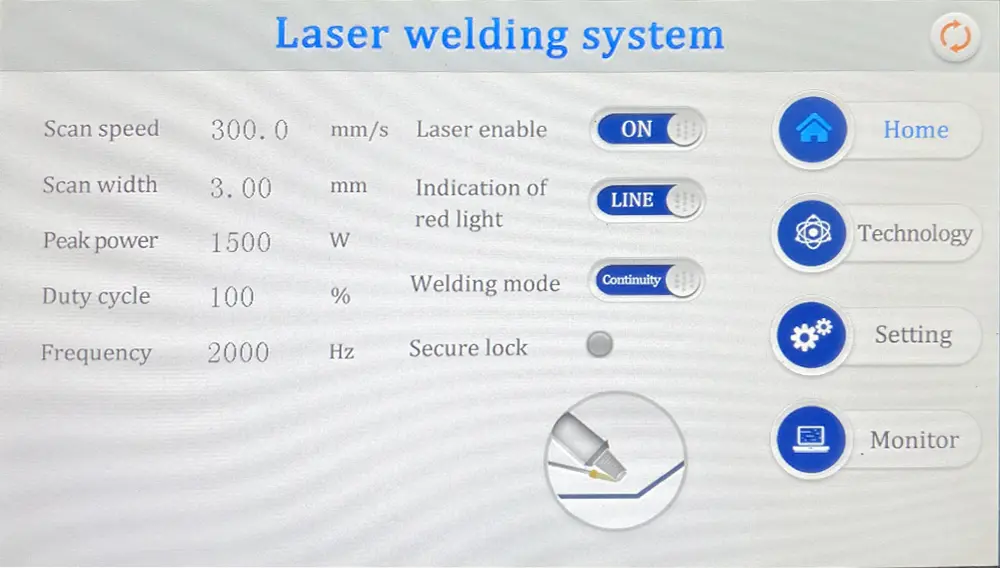The blowing system is a core component that determines the cleaning efficiency and equipment lifespan in laser cleaning processes. Proper configuration of blowing parameters can improve overall performance by over 30%. This article explains the key functions, technical specifications, and operational guidelines for the blowing system.

Core Functions of the Blowing System
- Efficient Contaminant Removal
Removes smoke and debris generated during laser cleaning in real time, preventing recontamination of the workpiece surface or obstruction of the laser beam. - Optical Component Protection
Creates a protective “air curtain” via directed airflow to block splatters from reaching lenses, extending their lifespan. - Process Enhancement
Enhances laser energy concentration on target areas (e.g., oxide layers, grease), improving stripping uniformity.
Technical Requirements
- Gas Type Selection
Scenario Recommended Gas General Use Dry, oil-free compressed air Flammable Materials Nitrogen - Pressure & Flow Control
- Pressure Range: 0.2–0.8 MPa
- Low pressure: Ideal for precision cleaning or thin contaminants.
- High pressure: Suitable for stubborn stains or large particles.
- Flow Matching: Must be synchronized with laser power and scanning speed.
- Pressure Range: 0.2–0.8 MPa
- Nozzle Angle & Position
- Angle: 30°–60°(Relative laser beam)
- Positioning: Cover the cleaning area while avoiding direct airflow toward lenses.
Operation & Maintenance Tips
✅ Daily Checks
- Ensure no nozzle blockage or air leakage.
- Monitor pressure stability (fluctuation <±5%).
✅ Regular Maintenance
- Clean filters weekly; replace high-precision filter cartridges (0.01 μm) quarterly.
- Record lens contamination frequency to optimize blowing parameters.
⚠️Common Issues & Solutions
| Issue | Solution |
| Uneven residue | Adjust nozzle angle or increase pressure |
| Rapid lens contamination | Check gas purity or upgrade filtration |
Proper configuration of the blowing system is crucial for maximizing laser cleaning efficiency. Choosing a professional solution significantly reduces operating costs and extends equipment lifespan.

 Triumphlaser
Triumphlaser